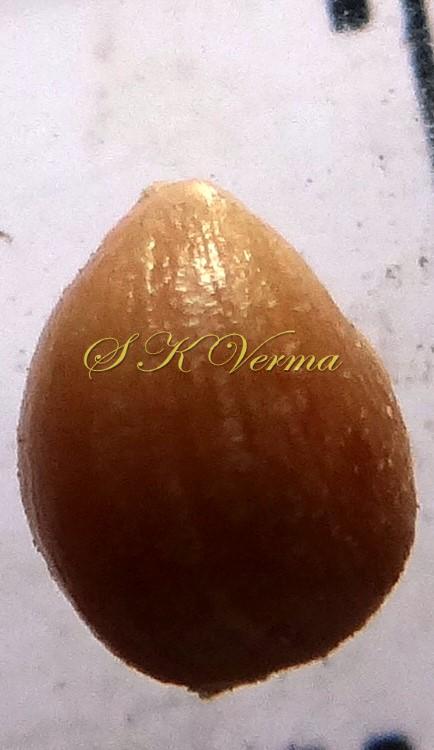BISCHOFIA
Bischofia
Blume, Bijdr. Fl. Ned. Ind. 1168. 1827; Hook. f., Fl. Brit. Ind. 5: 345. 1887; E. Li & Gilbert, Fl. China @ eFlora.org 11: 217; Hayden, Fl. North Amer. @ eFloras. org vol. 12.
Large trees, dioecious, rarely monoecious, deciduous with red or reddish latex, branching not phyllanthoid (see Phyllanthus); indumentum of simple hairs often absent. Leaves alternate, usually at stem apex, palmately 3(-5)-foliate; stipules small, falcate, caducous; petiole long; leaflet margins crenulate-serrate. Inflorescences unisexual, axillary or lateral, produced with younger leaves, paniculate or racemose, pendent, flowers 1 per bract. Male flowers: Pedicel articulated at base. Sepals 5, free, valvate, initially curved around stamens, later reflexed. Petals and disc absent. Stamens 5, free, inserted at bases of sepals and adnate to pistillode base; filaments short; anthers larger, thecae 2, parallel, introrse, dehiscence longitudinal. Pistillodes short and broad, peltate. Female flowers: Pedicel articulated at middle. Sepals 5, imbricate, flat, free. Petals and disc absent. Staminodes sometimes present, soon lost. Ovary 3(or4)-locular, ovules 2 per locule; styles 3 or 4, long, stout, entire, erect or recurved. Fruit small, baccate or drupe, globose, indehiscent, exocarp fleshy, endocarp papery to thinly woody, 3- or 4- locular. Seeds 3-6, oblong-obovoid, rather crescent, smooth, not carunculate, testa crustaceous, endosperm fleshy, embryo erect, cotyledon broad and flattened.
2 species
Bischofia javanica
Bischofia javanica
Blume, Bijdr. Fl. Ned. Ind. 1168. 1827; Hook. f., Fl. Brit. Ind. 5: 345. 1890; Parker, For. Fl. Punj. ed.1: 447. 1918 (Reprint 1973); Singh & Sharma, Fl. Chamba Dist. 626. 2006; Fl. China @ eFlora.org 11: 217; Fl. North Amer. @ eFloras.org vol. 12.
A large evergreen tree. Stem straight, branching lower; bark grey-brown to dark brown, ca. 1 cm thick, with red latex; branchlets glabrous. Leaves alternate, trifoliate; petiole 8-15 cm long, base pulvinate; terminal petiolule 2-4 cm, lateral petiolules 5-10 mm; leaflet blade ovate, elliptic, obovate, elliptic-oblong or elliptic-ovate, 7-13 cm x 4-8 cm, apex acute or acuminate, margin crenate-serrate, base broadly cuneate or obtuse, lateral nerves 6-8 pairs, sparsely pubescent only on nerves. Stipules membranous, lanceolate, 5-8 mm, caducous. Plants dioecious, flowers minute, in unisexual, axillary or lateral paniculate racemes about as long as petioles. Female racemes 15-32 cm long, erect in flowers, pendulous in fruits. Female flowers: ca. 5 mm across, not crowded; pedicels articulated at middle, short, elongating in fruit, pubescent. Sepals 5, free, flat, 2-4 mm x 1 mm, ovate or oblong-ovate, acute, margin membranous, persistent. Petals and disc absent. Ovary exserted, glabrous, 3-4-locular, 2 ovules per loculus; styles 3-4, 0.7 mm long, linear, connate at base, unbranched, erect in flower, spreading in fruit. Staminodes when present to 0.5 mm long, linear, soon lost. Fruit drupe, globose or subglobose, 6-7 mm x 9-10 mm, brownish, smooth; pedicel 1-2 cm long. Seeds 1-4, generally one developed, rest got aborted, oblong or curved, ca. 5 mm long, smooth, shining.
Male flowers: Red in bud, yellow at anthesis, ca. 2.5 mm across, crowded; pedicels ca. 2.5 mm long. Sepals 5, concave, semiorbicular, ca. 1.2 mm x 1.2 mm, abaxially puberulent, initially curved around the young stamens, later becoming reflexed. Petals 0; disc 0. Stamens 5, filaments distinct, short, 0.5 mm long, anthers yellow, large, ca. 1 mm long, dehiscing longitudinally. Pistillode short, broad, 5- angled, peltate. (Male plants not available. Description from the literature)
Common Names: Bishop Wood, Tiger tree, Bhillar, Paniala, Kein, Kanji (Hindi)
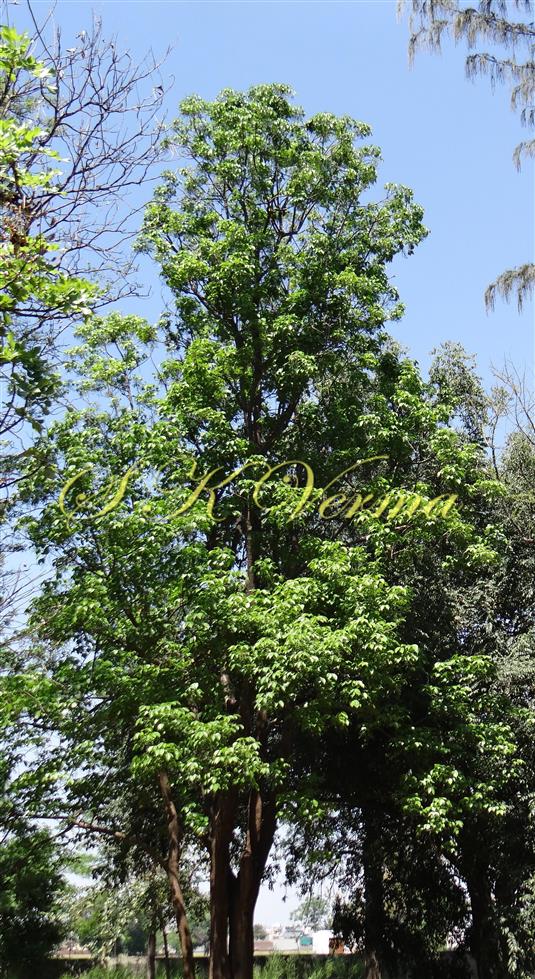
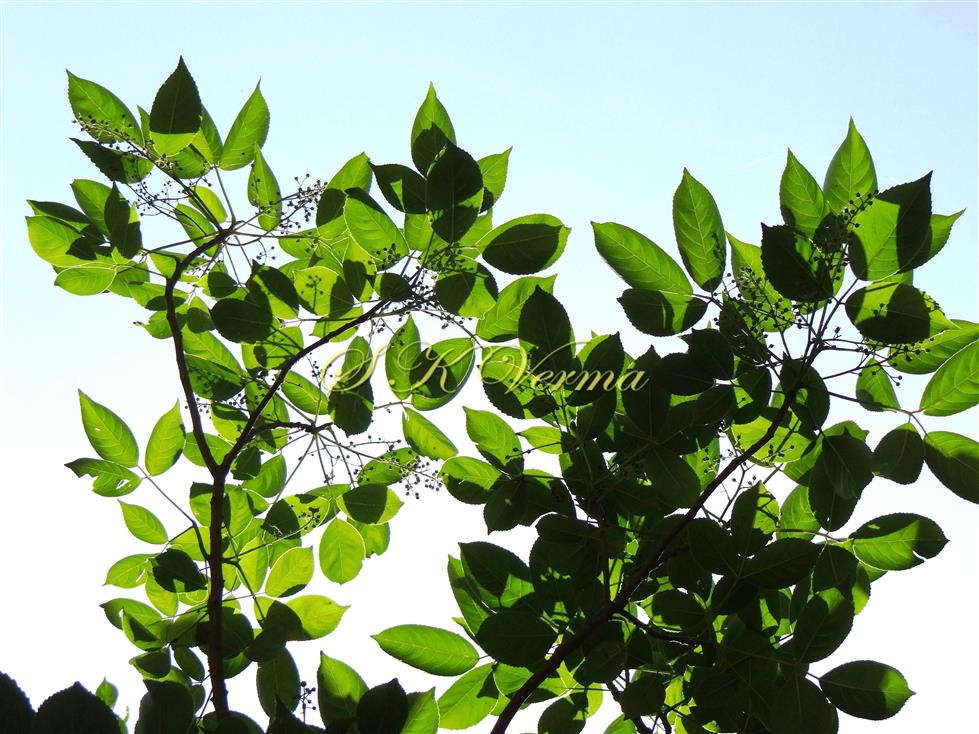
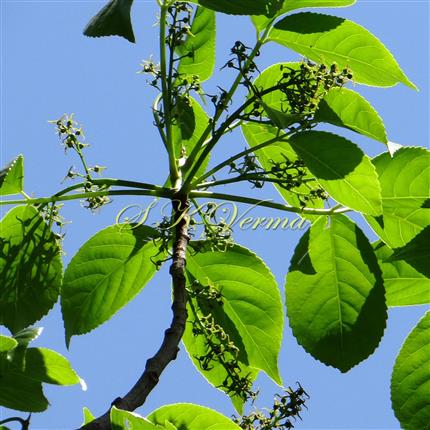
-DSC04177A.jpg)
-1538.jpg)
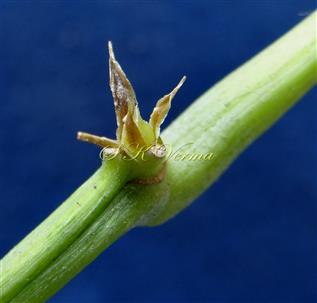
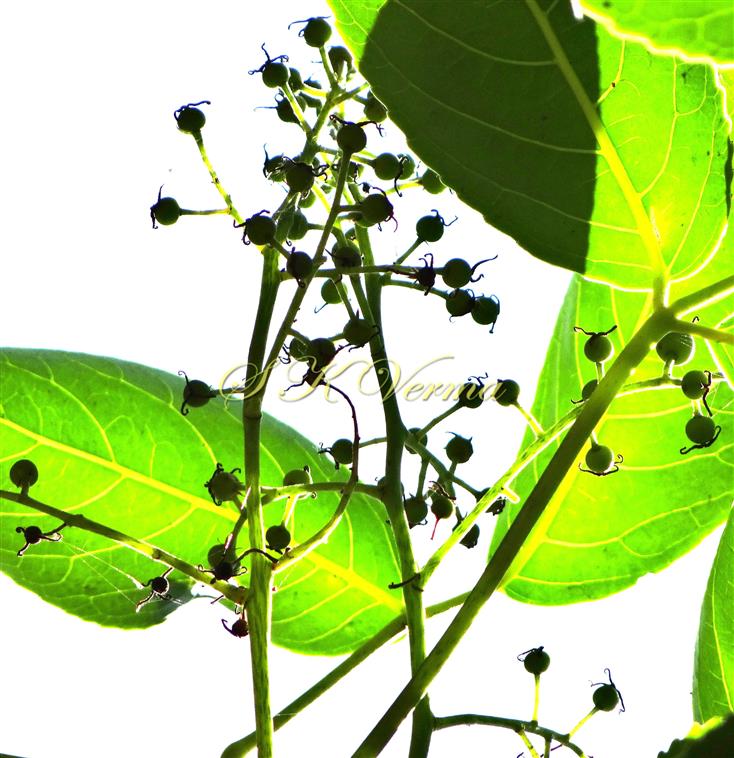

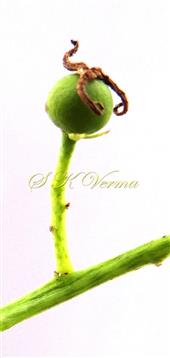
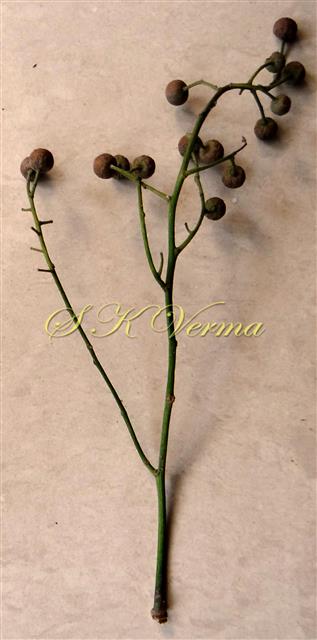
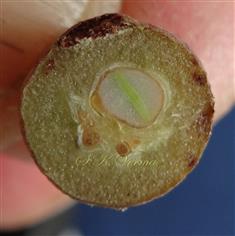
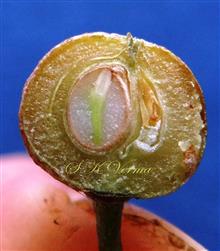
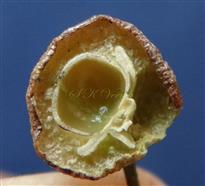





-DSC04177A.jpg)
-1538.jpg)








